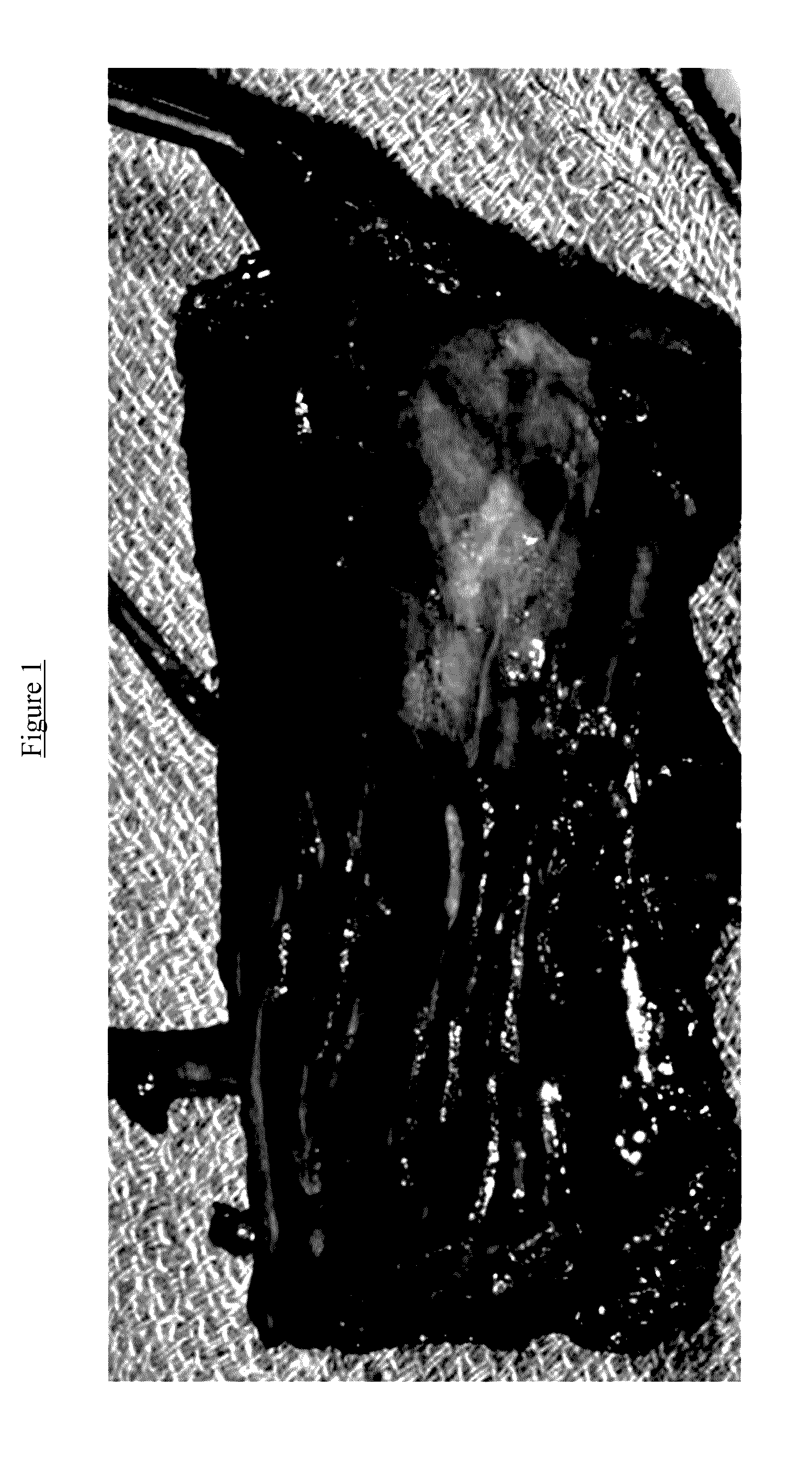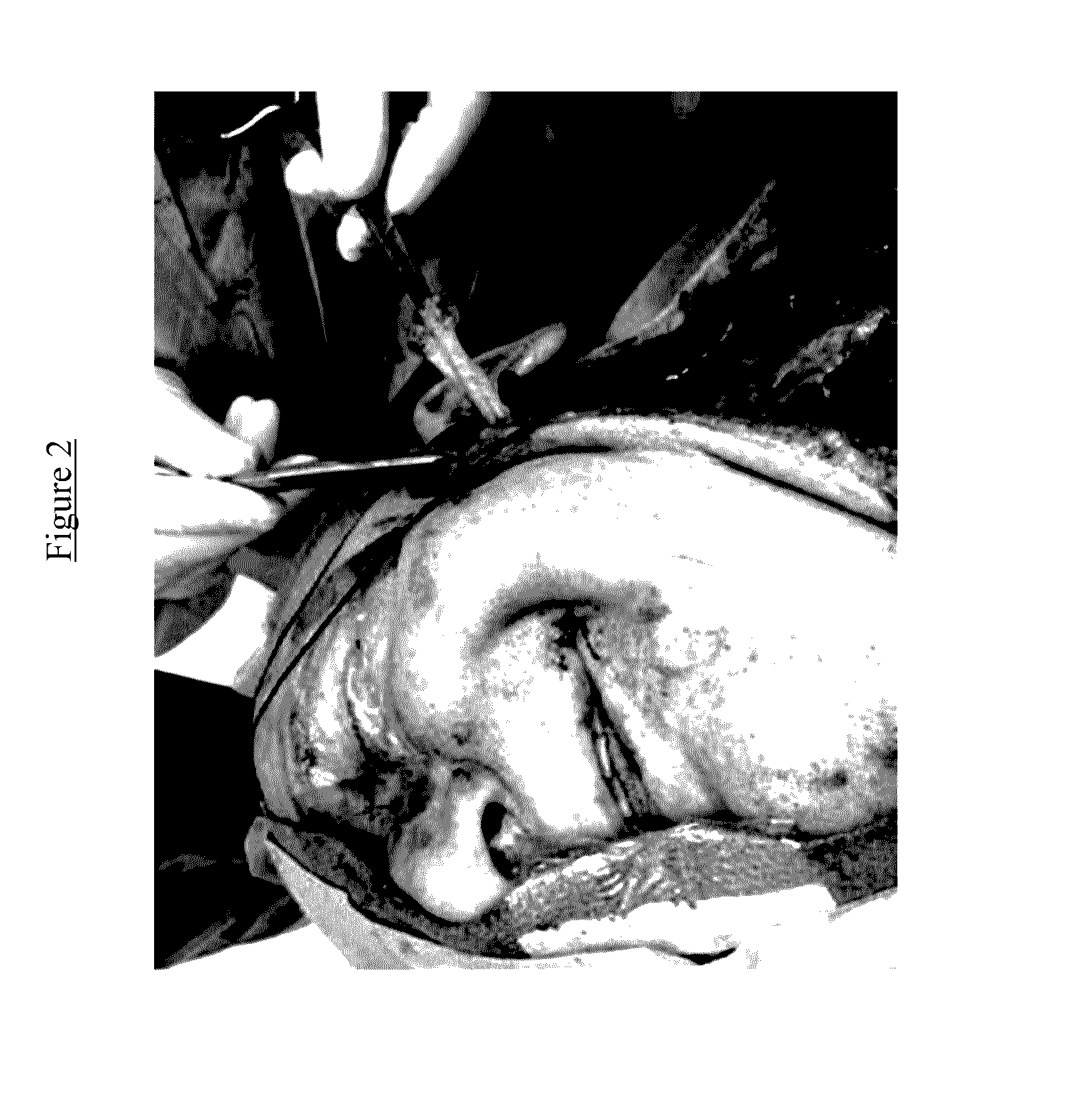Nerve stimulation device for treating or reducing paralysis
a stimulation device and paralysis technology, applied in the field of medical and biomedical science, can solve the problems of substantial functional and psychological problems, facial paralysis, and difficult to treat patients and physicians, and achieve the effect of reducing facial paralysis, dynamic and spontaneous facial symmetry, and treating or reducing facial paralysis
- Summary
- Abstract
- Description
- Claims
- Application Information
AI Technical Summary
Benefits of technology
Problems solved by technology
Method used
Image
Examples
example 1
Overview
[0056]Currently patients with permanent unilateral facial paralysis have very few effective options to restore dynamic and volitional (spontaneous and emotionally-driven) function to the weak or paralyzed side of their face. Surgeries to solely provide a minimal upward movement of the corner of the mouth involve transplanting a bulky thigh muscle into the face in one or more 6 to 12 hour invasive surgeries under general anesthesia followed by a three to five day hospital stay, if there are no major complications. In one embodiment, the invention involves placing a stimulating array with multiple electrode sites into the facial nerve to independently excite specific nerve fiber populations that generate isolated movements of the face (e.g. brow raise, blink, or smile). The device can be installed in a safe, routine, two-hour outpatient surgery that only requires a small 2-inch incision completely hidden behind the ear. In one embodiment, this surgery could be performed by any ge
example 2
Development
[0057]In one embodiment, the present invention provides (1) selective stimulation of facial nerve fibers responsible for isolated movements of the face, and (2) detection of the level of contraction of individual muscles on the normal (non-paralyzed) side of the face to direct targeted stimulation of the corresponding muscles on the paralyzed side of the face. This implantable device would receive wireless electromagnetic signals to provide programmable and graded electric current to one or more of its stimulating electrodes on its array. The attached array on the device could be a firm, sharpened shank to penetrate and reside within the facial nerve (FIG. 3). In the cochlear implant, the wireless signals originate from an external processor receiving sound information. On the other hand, in the instant facial nerve implant, the signals would convey electromyogenic information from the normal (non-paralyzed) side of the face.
[0058]Previous research has demonstrated the utili
example 3
Benefits
[0061](1) Less expensive. Currently, the main option for patients with unilateral permanent facial paralysis who would like a procedure to provide some degree of movement to the weakened face is a muscle transplant to the face. As previously mentioned, this method involves at least one 6-12 hour surgery followed by days and weeks of intensive post-operative care. In the more commonly performed two-stage procedure, the sural nerve is harvested from the leg using a long, 5-10cm incision in the leg. The functional (non-paralyzed) side of the face is then opened widely, again using a large and visible facial incision from above the level of the ear down to the neck, and the branch of the facial nerve that stimulates a smile on the functional side is found. This nerve is then cut, and the sural nerve is the sutured to this nerve. The other end of the sural nerve graft is then tunneled beneath the skin in the upper lip to reach the contralateral (paralyzed) side of the face. This com
PUM
 Login to view more
Login to view more Abstract
Description
Claims
Application Information
 Login to view more
Login to view more - R&D Engineer
- R&D Manager
- IP Professional
- Industry Leading Data Capabilities
- Powerful AI technology
- Patent DNA Extraction
Browse by: Latest US Patents, China's latest patents, Technical Efficacy Thesaurus, Application Domain, Technology Topic.
© 2024 PatSnap. All rights reserved.Legal|Privacy policy|Modern Slavery Act Transparency Statement|Sitemap



